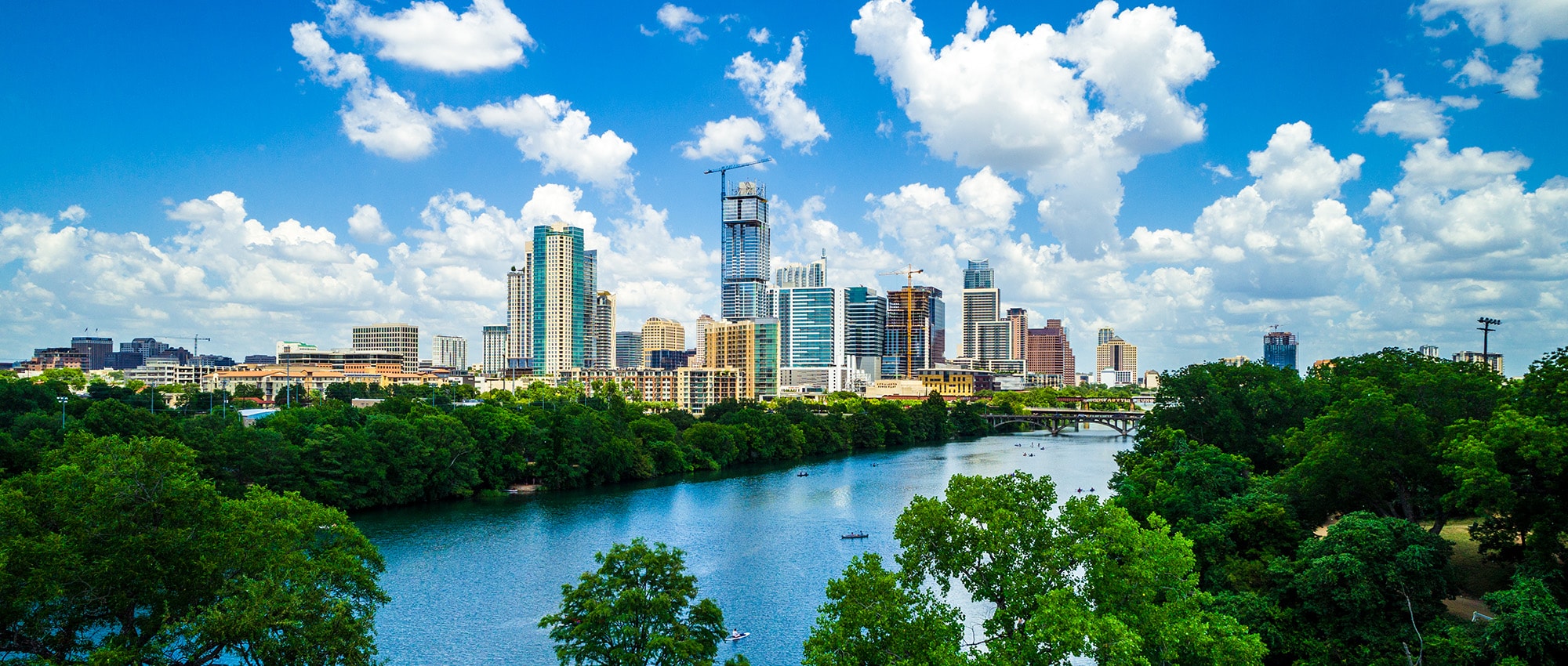Austin Ranks as
“Best-Performing” City Once Again

Photo taken from Aquila Commercial.
For the third year in a row, Austin took the No. 3 spot on the Milken Institute’s Best-Performing Cities report.
Milken’s index ranks cities on a variety of metrics, including jobs, wages, salaries and technology output. It’s designed to help the public and private sectors evaluate and compare cities throughout the nation. It is particularly handy for Realtors, job recruiters and site selectors.
Placed in the “tier 1” category that includes 13 large and 13 small cities, Austin ranked number 3 right after (1) Provo, Utah and (2) Palm Bay, Florida, demonstrating its improvement in many indicators including “one year job and wage growth” and “five year job and wage growth”. No other Texas cities were in the top 10.
Among the many advantages of living in the Lone Star State, Austin offers a low tax rate and plenty of space for expansion and development. Austin boasts a relatively low cost of living despite a thriving tech sector and has marketed itself as friendly and open to business relocations. Dell, Apple Inc., IBM, and Samsung Austin Semiconductor are all major employers, and BAE Systems recently announced a new Austin campus, which plans to bring an additional 800 jobs to the city. The state capital is also home to the University of Texas at Austin, which is a major research university with strong ties to industry. Oracle, the world’s second-largest software maker, also recently announced plans to move its headquarters to Austin from Redwood City, highlighting the city’s magnetic tech pull.
Despite a tumultuous 2020 globally, the large public sector has helped stabilize the economy. The federal, state, and city governments each employ over 6,000 people, contributing to a 16th place rank in short-term job growth. Housing affordability, however, will continue to be an issue beyond the pandemic, especially with the growth in housing costs in recent years.
CALIFORNIA LOSES STEAM
Municipalities throughout the San Francisco Bay Area — known lately for sending thousands of new residents to Texas — took a beating in the Milken report.
San Francisco, which took the top spot in last year’s breakdown of U.S. cities, fell 23 places. San Jose, which was No. 5 last year, came in at 22. And Oakland dropped 48 spots, going from 17 to 65.
But the biggest declines in the country came from some of the Bay Area’s outlying cities. Salinas suffered the largest drop of any U.S. metro area, falling 90 places from 41 to 131. The Santa Cruz-Watsonville metro area went from 52 to 124, a 72-point drop.
“A notable common characteristic of the cities that dropped the most is their proximity to larger ‘superstar cities,'” according to the report from the Milken Institute, which is based in Southern California. “Most of these metros also have low levels of high-tech industry concentration and extremely high housing costs. In Oakland’s case, these pressures have displaced many residents and decreased socioeconomic diversity.”
“The pandemic has had an outsized impact on cities where the economic effects of the current recession are exacerbated by high-housing costs,” said Kevin Klowden executive director of the Milken Institute Center for Regional Economics and California Center.
The Milken rankings measures economic vitality in 200 large metropolitan areas and 201 small metropolitan areas using job creation, wage growth and innovation industry metrics. The 2021 version of emphasized jobs, wages and high tech growth, housing affordability and household broadband access.
To download the full report from the Milken Institute, click here.
